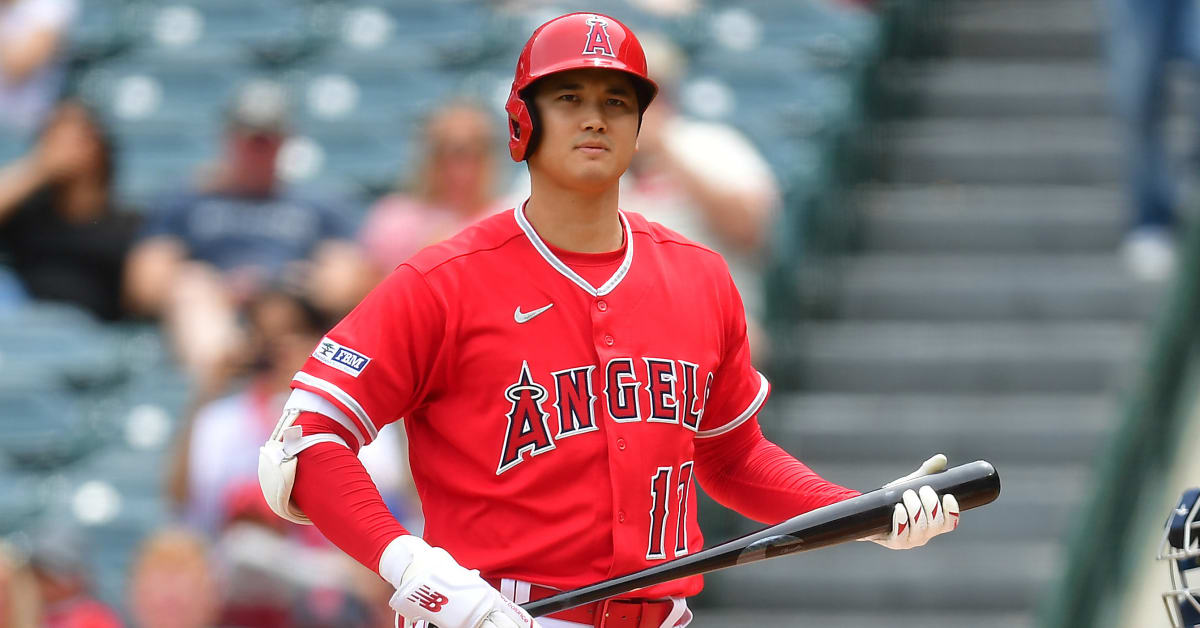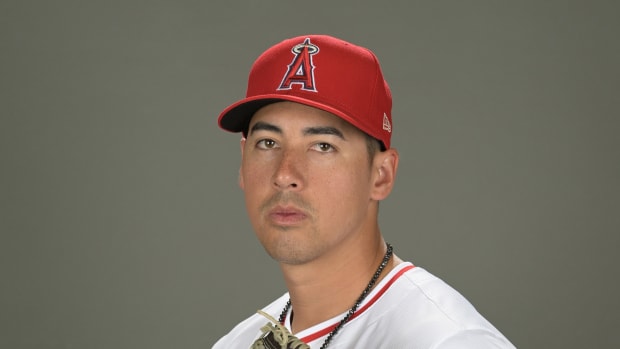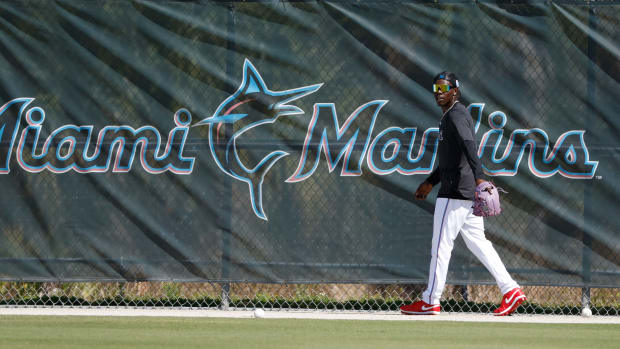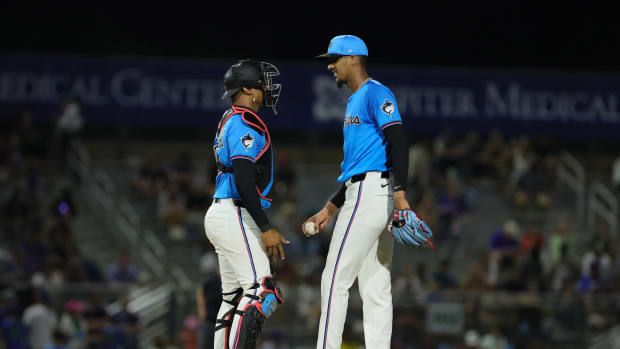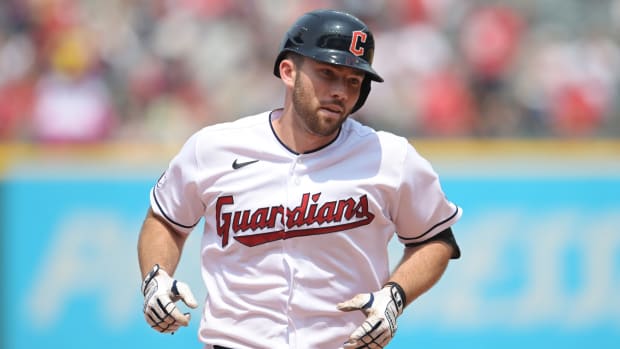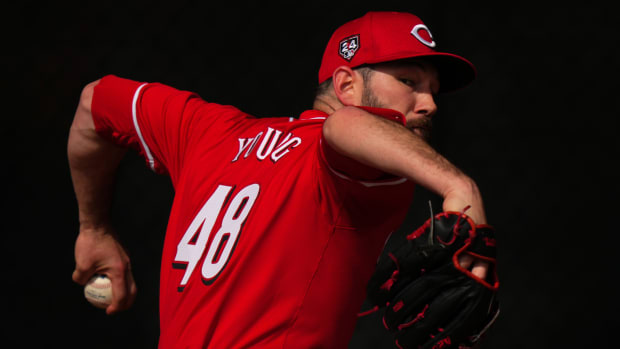Why Shohei Ohtani Signing With Blue Jays Would Make Sense
Shohei Ohtani to the Blue Jays? Are we to think the most expensive player in the history of baseball will sign with a team that has never carried a payroll high enough to pay the luxury tax and hasn’t won a postseason game in seven years? It’s not as crazy as it first appears.
The Dodgers still can offer Ohtani everything he wants: money, a chance to win every year, weather that doesn’t impede training or performance and the same Southern California lifestyle he has now. That’s why they have been the favorites to sign him. But then why isn’t he a Dodger already? Ohtani clearly has options that intrigue him. And the Jays now appear to be the best of those other options.
Ohtani was believed to be touring the Jays’ spring training facility in Dunedin, Fla., on Monday, according to The Athletic. You’re not flying across the country at this stage in the game on a whim.

The bidding for Ohtani has reached a more public phase with several teams being reported to have met with his agents.
Gary A. Vasquez/USA TODAY Sports
Here is why the Jays have emerged as the best fit for Ohtani outside of Los Angeles:
1. Market
Toronto is a cosmopolitan, international city and the home of Rogers Communications, the multinational media and communications company that owns the Blue Jays. What better brand ambassador for an international communications company than Ohtani. What better boost for attendance and ratings (Rogers also owns Sportsnet, which carries the Jays) than Ohtani. Talk about return on investment.
The Jays could sign Ohtani to a market-value baseball deal (around $600 million) and sign him as a Rogers international brand ambassador. MLB would investigate whether such an arrangement constituted a work-around to competitive balance tax regulations. It could not prevent such an arrangement but would have to determine if all money from Rogers to Ohtani, including from endorsement and marketing, should be under the CBT umbrella. Even without a formal side deal, Ohtani boosts the Rogers brand across the globe.
2. Facilities
The Jays recently spent $100 million on a state-of-the-art training center in Florida and are in the process of a $300 million renovation to Rogers Centre to turn it from a multi-purpose sports facility into a true ballpark with state-of-the-art amenities for players.
Ohtani is fastidious about his high-performance training and loves high-tech methodologies and devices to track it. The spring training headquarters for the Angels is an antiquated minor league facility.
“It’s very important to him,” says one source close to Ohtani about facilities. “Training and baseball are largely all that he does. He is devoted to the game.”
Ohtani also loves playing and training in climate-controlled environments. Cold, rain, wind and humidity are out. Ohtani enjoys playing at Rogers Centre, which very much reminds him of the Sapporo Dome, his home when playing in Japan with the Fighters. His career slash line in Toronto is .326/.466/.674.
His highest career OPS by ballparks with at least 12 games: Texas (former stadium, no dome) 1.320, Tampa Bay (dome) 1.153, Toronto (dome) 1.139, Dodger Stadium (1.136).
3. A chance to win
The Blue Jays are close. Toronto has won 91, 92 and 89 games the past three seasons but is 0–6 in playoff games. The window is closing on this group with Bo Bichette and Vlad Guerrero Jr. both two seasons away from free agency.
From a pure baseball perspective, Toronto is desperate for a lefthanded bat as a complement to Bichette and Guerrero. The Blue Jays haven’t had a lefthanded batter hit 40 home runs since Carlos Delgado 20 years ago.
Rogers Centre is a neutral hitters’ park, but changes made to the right field configuration this year slightly improved the hitting environment for lefthanded sluggers. It ranked 27th in 2022 in lefthanded home run factor (82, with 100 as average) and improved to 24th in 2023 (89). Overall, its park factor dropped from 101 to 100.

The Rogers Centre has been the Blue Jays’ home since 1989, but has been updated many times to preserve its modern feel.
Nick Turchiaro/USA TODAY Sports
4. Legacy
The Blue Jays haven’t won a pennant in a generation. If Ohtani wins there, it’s his team. If he wins with the Dodgers, who have won four of the past seven NL pennants, he is Roger Clemens joining the 1999 Yankees.
Leaving a unique legacy is important to Ohtani. It was his manager with the Fighters, Hideki Kuriyama, who challenged Ohtani out of high school when MLB teams such as the Dodgers wanted to sign him, presumably to be a pitcher or hitter. Kuriyama told him, “Dare to walk down a path nobody has taken.” That’s when Ohtani adopted the dream of being a two-way player. In the same vein, Toronto offers Ohtani the chance to define a unique legacy, not add to an existing one.
5. Money
There is nothing in Rogers’ spending history to suggest going to the crazy numbers it will take to sign Ohtani. They have used the CBT as a braking mechanism while fielding good teams but never blown it open the way San Diego did. It’s possible the communications company sees Ohtani as the rare asset worth changing that philosophy.
Nez Balelo, Ohtani’s agent, has been reminding teams of his client’s economic value beyond his baseball skills. To the Cubs, for instance, it was about selling subscriptions to their Marquee network. To the Astros it was about building up their new regional sports network.
There has never been a free agent who provides more residual economic value than Ohtani. One team estimated that Ohtani can throw off about $25 million in unique revenue (advertising, sponsorships, signage, attendance, media, etc.), which would bring his annual “net” cost in line with the likes of Mike Trout and Justin Verlander.
One baseball insider used the examples of advertising patches on uniform sleeves. Most teams have signed short-term deals for those rights (if at all) while the value of that market develops. If Ohtani is on your club, the value of that ad space immediately grows exponentially, especially with Ohtani under a long-term deal.
For instance, the Angels sold their sleeve advertising space for $7 million over three years but with an opt-out if they re-sign Ohtani, according to one high-ranking baseball source. The value of that same space for a team that signs Ohtani longterm, the source estimated, is about $150 million over 10 years.
In the end, Ohtani will decide on reasons that are personal and give him the most comfort. The mistake is looking at his choice merely as a cold business decision. He surprised us when he left Japan a year prior to being an uncapped international free agent. He surprised us when he quickly eliminated big-market teams such as the Yankees and Red Sox.
Right now, the Ohtani sweepstakes appear to be narrowing to the Dodgers and Blue Jays, with the Cubs and Giants hanging in there. Are the Jays a surprise? Not as much as you think.
Vaughn Grissom of the Braves reported to the Puerto Rico winter league today to begin training as an outfielder. The Braves plan to split their left field position between Grissom and newly acquired lefthanded hitter Jarred Kelenic. Grissom, who turns 23 in January, has played exclusively in the infield as a professional. Atlanta plans to give him occasional work in the infield in spring training to maintain his positional versatility.
The Red Sox are concentrating on the starting pitcher market to supplement Brayan Bello, Kutter Crawford and Chris Sale. Boston is loaded with hybrid pitchers such as Nick Pivetta, Garrett Whitlock, Tanner Houck and Josh Winckowski, although they regard Winckowski as less suited to starting as a two-pitch pitcher.
The Red Sox as of now plan for Pivetta, Whitlock and Houck all to be stretched out as starting pitchers in spring training. Each has flaws as a starter:
Pivetta’s stuff last year played much better out of the bullpen (3.07, 12.6 K per 9) than in the rotation (4.66, 10.9). Whitlock has been much better out of the bullpen in his career (2.65 in 132.2 IP) than as a starter (4.76 in 90.2 IP). Houck isn’t as effective enough against lefthanded hitters (.763 career OPS) and comes with a huge third-time around penalty (.957).
Boston should acquire two reliable starters, such as Seth Lugo and Yoshinobu Yamamoto, and use Pivetta, Whitlock and Houck to build a formidable bullpen with multiple-inning options.






























